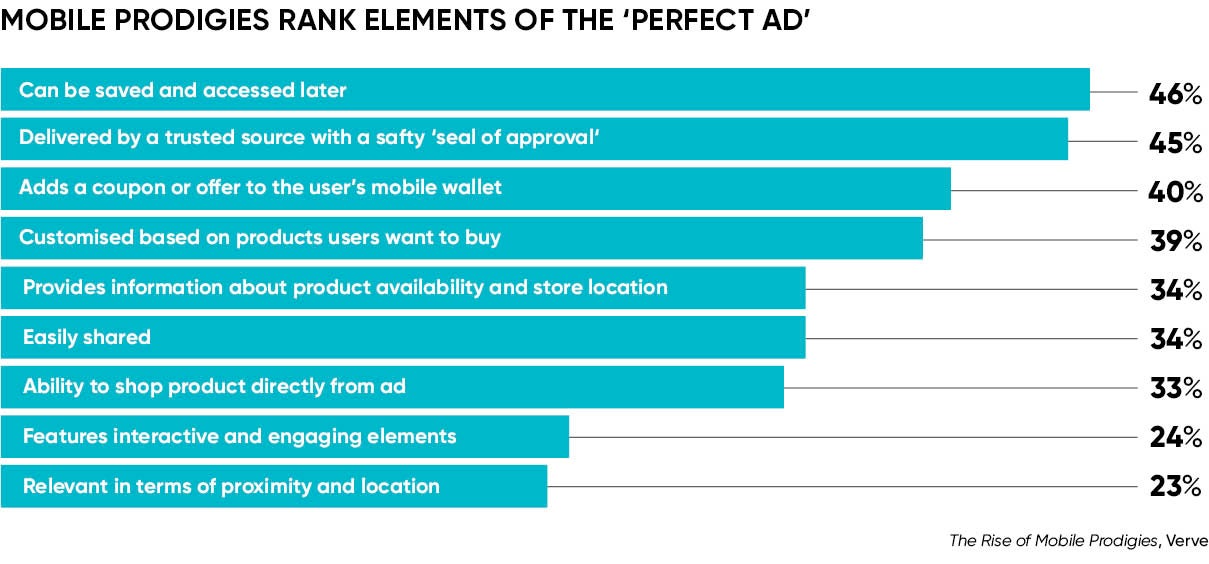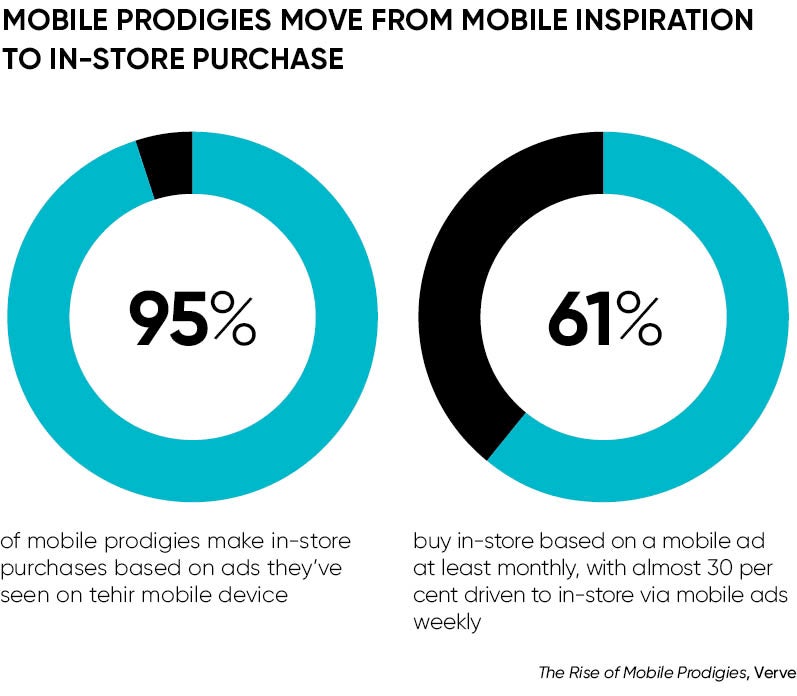Mobile devices teleport us; they transport users from destination to destination throughout their entire day, playing the roles of both communication tools and utility devices.
People in the UK have never been more addicted to their smartphones, according to Deloitte’s 2016 Mobile Consumer report, and no other personal device has provided the same commercial impact. Collectively, the UK population check their smartphones more than a billion times a day. These devices have become our ever-present companion, our connection to the outside world and bridge from digital to physical.
There are two rising demographics of mobile influencers advancing to the fore, generations who have never lived in a world without mobile. These mobile prodigies are born digital, growing up in a world of swiping, tapping and scrolling. Thinking about the future we must build, we need to centralise the context and individuality of every consumer in this grouping. Mobile is their link to social and digital exchange, placing them at the very heart of our ever-evolving industry is crucial to creating the best experiences for every end-user.
But first things first. Questions we can consider in pursuit of the mobile prodigies’ access, data and loyalty include how are consumers using their mobile devices today, what are the daily demands of the mobile prodigies and how exactly will this new generation impact our businesses?
TOMORROW’S MOBILE CONSUMERS
Mobile prodigies, composed of young millennials and Gen Z, spend some 46 per cent more time daily on mobile devices than they do watching television, according to Verve’s Mobile Prodigies white paper. Mobile is the first and primary screen for media consumption, whether mobile prodigies are on the go or at home. They expect personalisation and they respond to marketing that provides them with aesthetically pleasing innovations, entertaining experiences and contextually relevant ads.
In Verve’s recent research, 60 per cent of US mobile prodigies said they would rather lose their wallet than their mobile phone. A UK respondent threatened to throw herself into the Thames if she ever lost her device. A dramatic response, indeed. It is also a lens on to the true significance these small personal devices hold for young consumers.
It’s not only the relationship with this device that has changed over the past decade, but also device usage and time spent on mobile has altered the way publishers and advertisers approach this tiny screen. Verve’s research revealed that 80 per cent spend more time on mobile apps than they did a year ago and this is no surprise when we consider that, throughout the last eight years, app stores have generated tens of billions of dollars in revenue via download sales and in-app payments, according to Deloitte.

RECOGNISING INDIVIDUALITY
Mobile prodigies value their individuality and demand that advertisers recognise it too. Eighty per cent of US mobile prodigies expect tailored ads that not only target location, but also recognise their interests and habits. The entire context has to fit. When asked what makes a great mobile ad, London respondents all agreed – when relevant to their location and context, they are more than willing to engage. “I’m going to engage more with an ad that’s personalised to where I am,” according to one. “It introduces a new aspect of that place, a new identify to explore.”
However, there’s a fine line between targeting the right user in the right context and retargeting a user with an irrelevant message at the wrong time of day. Our respondents in the UK made this statement extremely clear: “If I’ve liked a product placement on Tumblr, don’t follow me to Twitter, don’t follow me to Facebook, don’t follow me to Snapchat. Just go away,” says another London respondent.
This is where relevancy becomes infinitely important. For example, the likelihood of me engaging in a mobile video ad placement during a long commute home would be greater than when I am running between meetings. And it’s these “sweet spots” that we need to master. Bad retargeting will inevitably create bad user experiences. In a world where consumers have ad-blocking options at their fingertips, the industry requires a smarter approach. To reap the opportunity that comes with personalisation, we need to perceive and appreciate the consumer fully – what mood are they in or what does their location, likely activity and the time of day tell us about context and the best approach when it comes to serving a mobile ad?

MOVEMENT INTELLIGENCE
Overlaying movement intelligence derived from the consumer’s device transforms shopper segments into enriched audiences, and this allows marketers to understand the context and mindset of that individual. Location-derived marketing provides the key.
As data-sharing becomes more and more accepted, especially among mobile prodigies, who say it can be acceptable given the right conditions, trust between consumers and brands strengthens. Yes, ad blocking implementation is still high, with 56 per cent of mobile prodigies surveyed in our US white paper stating they currently use or plan to use ad-blocking software. However, what resonated the most throughout our video findings was the value exchange. Young mobile consumers are continuingly weighing the benefits of sharing their personal data. Sixty per cent agree, if they are presented with more relevant advertising, they become rapidly more comfortable in sharing data.
And it’s this data that unlocks the future of mobile storytelling.
The takeaway is this, says Julie Bernard, chief marketing officer at Verve: “If we serve mobile prodigies best-in-class mobile experiences, permission comes down to relevance and reward. When we eliminate intrusive, contextually blind experiences from the mobile ad space, and when we offer predictive, surprising and delightful creatives, then consumers provide us permission to engage them in new and meaningful ways.”
For more information please visit www.verve.com
TOMORROW’S MOBILE CONSUMERS

RECOGNISING INDIVIDUALITY

